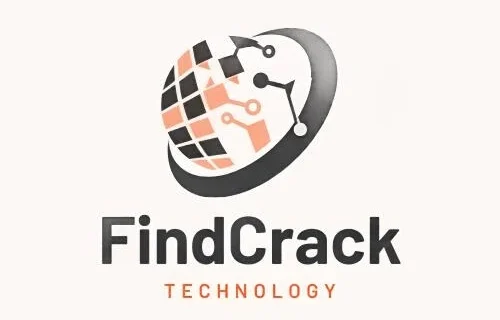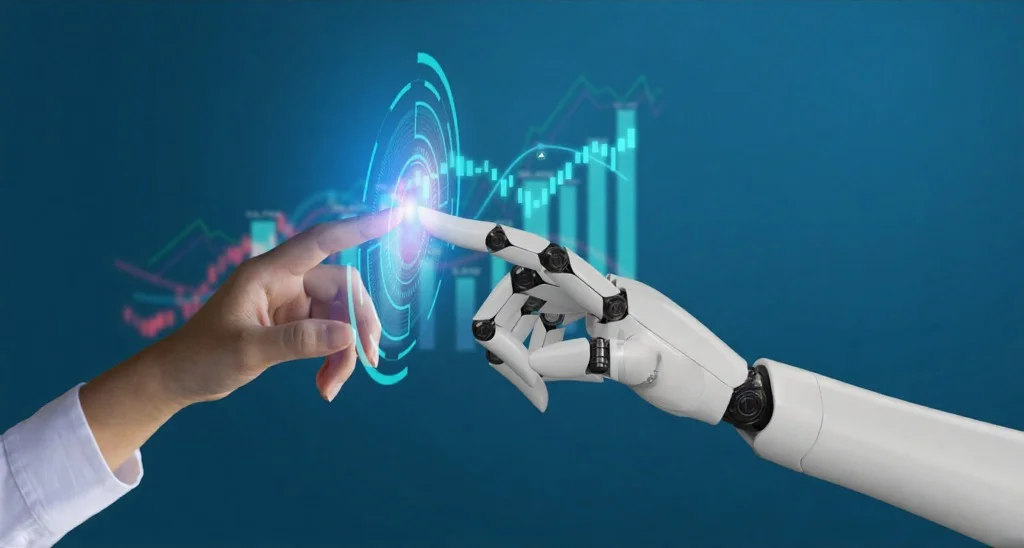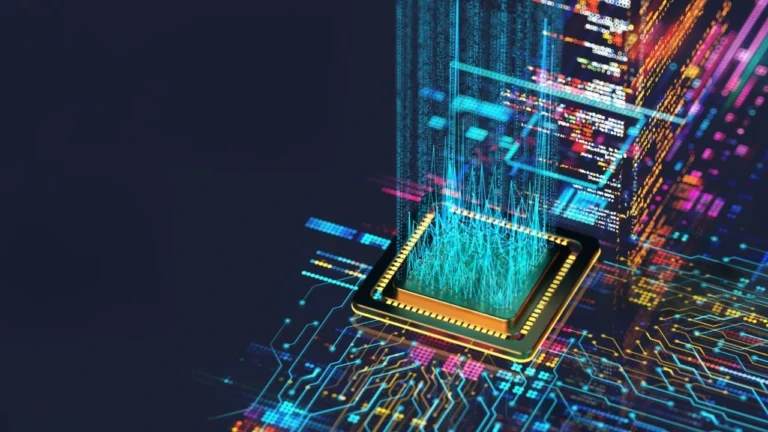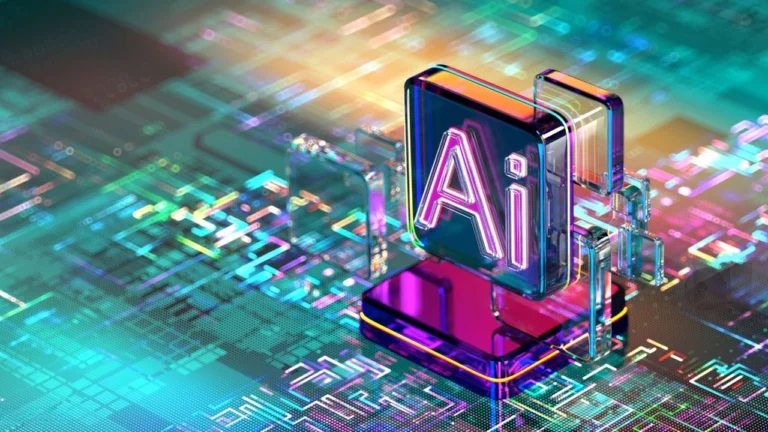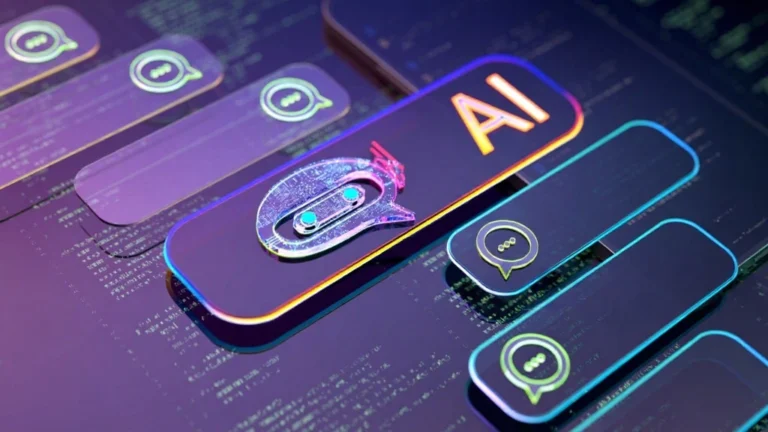Introduction
Can robots learn in the same way that people do? Machine learning is used by apps like Netflix to propose things. In 2025, 80% of organizations will utilize ML, yet a lot of them are encountering problems. People who are new to the field typically don’t understand terminology like “machine learning” and “precision vs. recall.” Being a machine learning engineer seems like a tough profession. It’s not easy to answer queries like “What does an epoch mean in machine learning?” or “What does a PCA mean in machine learning?” It seems like the IBM machine learning expert degree and tools like the best GPU for machine learning are too far away. This tutorial helps you understand machine learning (ML) concepts, tasks, tools, and the logistics sector better. Start your trip with ML right now!
Generative AI vs Machine Learning
Understanding Generative AI vs Machine Learning
People are interested in the differences between generative AI and machine learning. Machine learning helps computers learn from data. It looks for patterns and makes guesses. Spotify, for instance, uses machine learning to propose songs. Generative AI is a type of AI that makes things like text or images. DALL-E does art based on prompts. ML does bigger things, like guessing what stocks will cost. Generative AI employs GANs to make things that are creative. For classification, ML uses discriminative models. Both use datasets and algorithms. Generative AI makes things, while ML predicts things. This difference helps you choose the right equipment for the job.
Generative AI is great for creative uses. It makes logos or writes stories. Machine learning can help with things like finding fraud. For example, a bank utilizes machine learning to flag transactions that look suspect. Generative AI makes pictures for marketing. Generative AI will make up 30% of all digital material in 2025. ML does predictive analytics in finance. For both to be accurate, they need good data. Hugging Face is a good place for beginners to learn about generative AI. If you know the difference between generative AI and machine learning, you can pick the proper technology for your project.
Practical Applications and Tools
Generative AI needs a lot of data. For instance, you need thousands of songs to train a model that makes music. Some machine learning models are more sophisticated than others. Linear regression can only guess at basic trends. Neural networks can tell what pictures are. Generative AI will make marketing 25% better by 2025. TensorFlow and other tools support both. A store, for example, uses ML to predict sales. Generative AI makes ads. Python libraries are a good place for beginners to start. Understanding the difference between generative AI and machine learning can help you use them well in creative or analytical work.
What is Precision in Machine Learning and What is Recall in Machine Learning
Precision vs Recall Machine Learning
What does it mean for machine learning to be precise? Precision tells you how many of the expected positives are actually true: True Positives divided by (True Positives plus False Positives). What does “recall” mean in machine learning? Recall tells you how many real positives you catch: True Positives divided by (True Positives plus False Negatives). When it comes to machine learning, precision and recall are two sides of the same coin. High precision keeps spam detection from giving false positives. Most spam is caught via high recall. The table below makes things clearer with a confusion matrix.
|
Results |
Predicted Positive |
Predicted Negative |
|
Actual Positive |
True Positive (TP) |
False Negative (FN) |
|
Actual Negative |
False Positive (FP) |
True Negative (TN) |
High recall saves lives when it comes to finding diseases. High-precision marketing targets the proper customers.
The F1-score is a compromise between precision and recall. For instance, when finding heart illness, a high recall rate finds more cases. False alarms may happen more often when precision is low. These metrics will be used by 60% of ML models in 2025. A confusion matrix shows how well something works. For example, spam filters need to have a high recall rate to catch threats. For marketing to work well, it needs to be very precise. Beginners can use Scikit-learn to check these numbers. Machine learning improves models for some tasks by understanding the difference between precision and recall.
Practical Examples and Evaluation
Model evaluation is guided by precision and recall. For example, a model for finding cancer puts more weight on recall so that fewer cases are missed. A marketing approach employs accuracy to find clients that are interested. Forty percent of organizations will use these measures for ML in 2025. Research on evaluation is available through tools like Google Scholar. A confusion matrix looks at the outcomes. A fraud detection model, for instance, takes both metrics into account. Beginners use datasets like UCI’s heart disease collection to practice. Understanding what precision and recall mean in machine learning is important for making accurate models.
What is an Epoch in Machine Learning and What is Inference in Machine Learning
What is an Epoch in Machine Learning?
What does “epoch” mean in machine learning? An epoch is one entire pass of a training set. Changing the weights helps models learn. For example, a dataset with 2,000 photos and a batch size of 200 needs 10 batches every epoch. Underfitting happens when there aren’t enough epochs. When there are too many noises, it’s simple to forget them. Tuning epochs makes sure that the results are correct. A model for recognizing numbers that takes 15 epochs is one example. Tuning epochs will have cut training time by 20% by 2025. People that are new to programming use Python to test things out.
Epochs influence how well training works. Costs grow since larger files need more epochs. TensorBoard and other tools keep track of how fast things are going. One example is a model that looks for spam and runs for 10 to 20 epochs. Early halting terminates the training when there is no more progress. In 2025, half of all ML initiatives will adopt early stopping. People who are just starting out can use free files. Knowing what an epoch is helps you build models that operate well in machine learning. This is something that both students and professionals who are new to machine learning need to know.
What is Inference in Machine Learning
What does it mean to infer from machine learning? Inference employs models that have already been trained to make predictions about fresh data. During inference, a model might flag spam emails, for instance. It makes chatbots and self-driving cars work. Inference is useful in the actual world. Fast inference powers half of all real-time apps by 2025. Model quantization makes it faster to make predictions on phones. For example, a fraud detection system finds transactions right away. TensorFlow is easy for beginners to use for inference. This idea makes sure that ML models can address real-world issues well.
Inference needs models that are as effective as they can be. A healthcare model, for instance, uses scans to figure out what ailments a person has. Inference speed is very important for 60% of apps in 2025. Techniques like pruning make models smaller. For example, a store utilizes inference to guess what customers would buy. AWS and other cloud systems help with quick inference. Simple tasks help beginners learn how to make inferences. Knowing what inference is in machine learning helps you use models for real-world activities, like running a store or an autonomous system.
What is a Machine Learning Engineer and What Does a Machine Learning Engineer Do
What is a Machine Learning Engineer
What does a machine learning engineer do? A machine learning engineer creates and puts to use ML models. They write algorithms and prepare data for processing. They train models and tweak hyperparameters with Python and TensorFlow. In 2025, machine learning engineers in the U.S. will make between $150,000 and $200,000 a year. They make solutions like recommendation engines for stores. Engineers tidy up datasets and make them work better. They work with data scientists. You need to know how to code, do arithmetic, and solve problems for this job. It’s perfect for people who love technology.
Machine learning engineers utilize Jupyter Notebook to make prototypes. They use Docker to deploy models so they may grow. As an example, an engineer makes a chatbot for a store. In 2025, they will spend 40% of their time preparing data. They keep an eye on models to see whether the data changes. The job market for this role is growing by 20% per year. If you want to be successful, you need to learn Python and PyTorch. Engineers work in the fields of health care, finance, and technology. This job pushes for new ideas by using data to find solutions.
What Does a Machine Learning Engineer Do
What is the job of a machine learning engineer? Engineers make ML systems. They gather information, teach models, and put solutions into action. Coding algorithms and testing models are things that need to be done every day. For instance, they make systems that find fraud. They employ AWS and Scikit-learn, among other things. Engineers will spend 30% of their time in 2025 improving models. They work with other teams to find realistic answers. Engineers use measurements like accuracy to judge how well something works. This job requires both creative and technical talents, which can lead to rewarding careers.
Engineers keep an eye on models that are in production. For example, they fix sales forecast models that don’t work as well as they should. AI startups need more engineers in 2025. They use cloud platforms to make their services more flexible. Being good at statistics and algorithms is really important. An engineer, for example, creates a recommendation system for online shopping. People who are new to something start with tiny projects to get better at it. Knowing what a machine learning engineer performs can help you design a successful career in ML.
Machine Learning Engineer vs Data Scientist and PhD in AI and Machine Learning
Machine Learning Engineer vs Data Scientist
A machine learning engineer and a data scientist make it clear what job routes are available. The main job of machine learning engineers is to deploy models. They utilize Python to make systems that can grow. Data scientists look at data to find patterns. They utilize numbers to uncover patterns, like figuring out how many customers will leave. Scientists look for patterns, while engineers construct answers. Both make between $130,000 and $150,000 in 2025. Scientists are better at analysis than engineers are at coding. A data scientist looks at sales data, while an engineer puts a model into action. Both make decisions based on data.
The abilities you have determine the roles you can take on. Do you love coding? Try being a machine learning engineer. Like doing research? Data scientist is a better fit. Engineers utilize TensorFlow and other tools. R is a programming language that data scientists use to do statistical analysis. There is a need for both jobs in 2025. For example, a data scientist can guess what will happen in the market. A chatbot is set up by an engineer. They both shape technology. Knowing the difference between a machine learning engineer and a data scientist will help you choose the ideal job for your skills and ambitions.
PhD in AI and Machine Learning
A PhD in AI and machine learning is a good fit for people who like to do research. It takes four to six years to learn, with a focus on deep learning or NLP. Graduates work in academic or lab employment, as at Google Research. They make algorithms, such as ones that make speech recognition better. In 2025, people with PhDs will make more than $180,000 in top jobs. There are classes and dissertations as part of the programs. You can get by without a PhD if you have practical abilities. Kaggle projects, for instance, indicate that you know what you’re doing. A PhD in AI and machine learning leads to cutting-edge new ideas.
People with PhDs write publications that are available on Google Scholar. For example, they make models for self-driving cars. Thirty percent of ML leaders will have PhDs by 2025. Advanced approaches like reinforcement learning are taught in programs. Internships are another way to get real-world experience. For instance, working on a classifier project helps you learn. A PhD in AI and machine learning gives you a lot of knowledge. Instead, beginners can start with certifications. This course is good for people who want to test the limits of ML.
Best GPU for Machine Learning and Machine Learning App Development Company
Best GPU for Machine Learning
The best GPU for machine learning makes jobs go faster. GPUs do parallel calculations to speed up training. The NVIDIA H100 NVL (94 GB memory), A100 (80 GB), and RTX A6000 (48 GB) are the best GPUs in 2025. The H100 is good for big models like LLMs. The RTX A6000 is good for little projects. High memory decreases training time by 40%. The H100 is needed to train on 1 million photos, for instance. Pick GPUs according to how much money you have and how hard the job is.
AWS and other cloud platforms let you rent GPUs. This helps new businesses save money. For example, the RTX A6000 is used by a classifier. In 2025, GPUs make deep learning work better. NVIDIA has an 80% market share. CUDA and other tools improve performance. People that are just starting out use Google Colab to get free GPUs. The finest GPU for machine learning makes training go quickly. A neural network, for example, trains twice as fast. GPUs are very important for making ML projects bigger.
Machine Learning App Development Company
A business that makes machine learning apps builds unique solutions. TechMagic and Neoteric are two of the best companies in 2025. TechMagic makes predictive software with the help of over 320 specialists. Neoteric works on more than 50 AI projects. They make chatbots or technologies that can find fraud. For instance, TechMagic helped a store sell 20% more. These companies use AWS and TensorFlow. Companies can gain without having their own teams. If you want trusted solutions, pick a machine learning app development business with good evaluations.
These businesses take care of data integration. For example, 10 Clouds makes apps for stores. Outsourcing saves 30% on expenditures in 2025. Look at portfolios on Clutch to see how good they are. Companies like Deeper Insights work on AI for businesses. They make sure that applications can grow. For instance, a logistics app finds the best routes. Working with a company that makes machine learning apps can help your business thrive. Companies are able to use ML without needing to know how to code, and they do well in competitive marketplaces.
IBM Machine Learning Professional Certificate and Learning Paths
IBM Machine Learning Professional Certificate
Coursera’s IBM machine learning professional certificate gives you critical skills. It has both supervised and unsupervised learning. Students build stuff like classifiers. It takes six to twelve months to finish the course. Graduates get a certificate that they can show off, which helps their resumes look better. It’s great for folks who want to work as machine learning engineers. People that are certified will be able to gain 30% more jobs in 2025. The app is written in Python and uses real data. It shows you how to use models in real life. Start the IBM Machine Learning Professional Certificate to move up in your career.
The credential has six courses on deep learning. Projects try to figure out how much houses will cost or organize pictures. It’s for folks who are already familiar with Python. Online access is useful for busy people. Certifications will prove that you are an expert in 2025. Kaggle challenges might help you get better at what you do. For example, a regression model makes portfolios better. You may get equipped for professions like making supply chains better with the IBM machine learning professional certificate. It’s a smart idea to get better at ML.
Building ML Expertise
Take a look at Coursera’s Stanford course on the basics of machine learning. EdX offers MIT courses that go into more depth. Kaggle lets people practice their talents by entering competitions. For instance, create a model to find fraud. Aurélien Géron’s book “Hands-On Machine Learning” is a good read. For support, go to Reddit’s r/MachineLearning. In 2025, having real-world experience will be very important. You seem to know what you’re doing because of recommendation systems and other work you’ve done. Keep up with Towards Data Science. Machine learning is always changing; thus, to do well in it, you need to keep studying.
Beginners can study using free tools like Google’s ML Crash Course. Advanced students read papers from arXiv. You may learn how to analyze with the Titanic challenge on Kaggle. In communities, people can communicate to each other and write comments. For example, a project that forecasts stocks helps individuals learn. Join webinars to learn about new things. In 2025, projects will assist people in getting jobs. There are libraries for Python, like TensorFlow, that you can look into. Doing a lot of machine learning will help you learn it. This gets you ready for interesting chances in a field that is changing quickly.
Machine Learning in Logistics Industry
Applications of Machine Learning in Logistics Industry
Machine learning changes how things work in the logistics business. Demand forecasting tells you how much stock you need, which cuts waste by 30%. Using traffic data to choose the best route saves gas. Inventory management makes reordering easier by automating it. Predictive maintenance finds problems with equipment, which cuts down on downtime. Amazon uses machine intelligence in the logistics industry to speed up delivery. ML makes things 40% more efficient in 2025. These apps need algorithms and data that are correct. ML helps companies save time and meet the needs of their customers.
ML makes things better for customers. For instance, ML guesses when packages will arrive, which makes people happier. Chatbots answer questions right away. ML speeds up deliveries by 25% in 2025. UPS uses machine learning models to find the best routes. Walmart predicts that there would be more demand for superior goods. DHL utilizes machine learning to guess when shipments will be late. These programs show how powerful ML is. Data-driven solutions help businesses run more smoothly. Using machine learning in logistics helps businesses stay competitive in a market that moves quickly.
Benefits and Challenges in Logistics
ML helps you save money and get things to you faster. When you can make precise predictions, customers are quite happy. ML lowers down on shipping errors by 30% to 50%. The finest routes help businesses save money. But if the data isn’t good, the predictions will be inaccurate. It’s not straightforward to add ML to systems. People who know how to run models do it. ML helped 471 firms save money in 2025. Data is more accurate when it is cleaned up. You can easily link things to cloud platforms. You can learn new things if you work for a company that creates machine learning programs. Machine learning is what helps logistics grow.
For example, if you have the wrong data, you might predict wrong about how much stock you have. It’s easier to work with models when they’re all in the same format. In 2025, 60% of logistics organizations will use machine learning. It’s straightforward to deploy with AWS SageMaker. Getting guidance from experts makes things better. One great thing about ML is that it can help you save money. You need to plan ahead for system integration to work. The best companies in their area are the ones that can deal with issues. Machine learning makes logistics faster and more reliable. When there is a lot of rivalry in a market, companies do well when they become more efficient and keep their customers.
What is PCA in Machine Learning and Getting Started
What is PCA in Machine Learning
What does PCA mean in machine learning? PCA, or Principal Component Analysis, cuts down on the number of dimensions in data. It maintains important information and reduces 100 features to 10. PCA makes training faster and reduces down on noise. For instance, it shrinks pictures so they can be processed faster. PCA makes stock data easier to understand for predictions in finance. PCA saves training time by 30% in 2025. It helps you see client data. People who are new to PCA utilize Scikit-learn. What is PCA in machine learning that makes models work well?
PCA finds features with a lot of variance. For example, in facial recognition, it looks at important features like the distance between the eyes. 40% of ML models will use PCA by 2025. It lowers the cost of computing. PCA, for instance, helps look at trends in the industry. PCA research is available through tools like Google Scholar. People who are new to UCI datasets practice with them. Learning what PCA is in machine learning helps you learn how to work with complicated data. Data scientists and engineers need PCA
Starting Your ML Journey
Begin with Scikit-learn and Python. Study math, like calculus, statistics, and linear algebra. Take courses on Coursera or edX. Make things like spam filters. You may compete and obtain data sets by signing up for Kaggle. If you need help, join Reddit’s r/MachineLearning. You will become an expert in machine learning by 2025 if you continue to practice. Employers can see what you can do through your work. Stay curious and keep learning. This exciting area of machine learning gives you more choices in your job or business.
Start by trying to guess how much a house will cost. You should use Jupyter Notebook to compose your code. The Titanic dataset from Kaggle teaches you how to look at data. For trends, check out Towards Data Science. Meet new folks during meetups. Having experience will help you do well in 2025. TensorFlow is a good choice for harder problems. You can write code for free with tools like Google Colab. If you want to do well in ML, you need to practice a lot. Start with straightforward jobs to build your confidence, and then go on to harder ones.
Conclusion
Machine learning powers apps and businesses. This guide explained what precision in machine learning is, what recall in machine learning is, and what PCA in machine learning is. It covered what a machine learning engineer is, what a machine learning engineer does, and the difference between a machine learning engineer and a data scientist. You learned about the best GPU for machine learning, the IBM Machine Learning Professional Certificate, and machine learning in the logistics industry. Start with a course or project. Share your ML goals in the comments!
